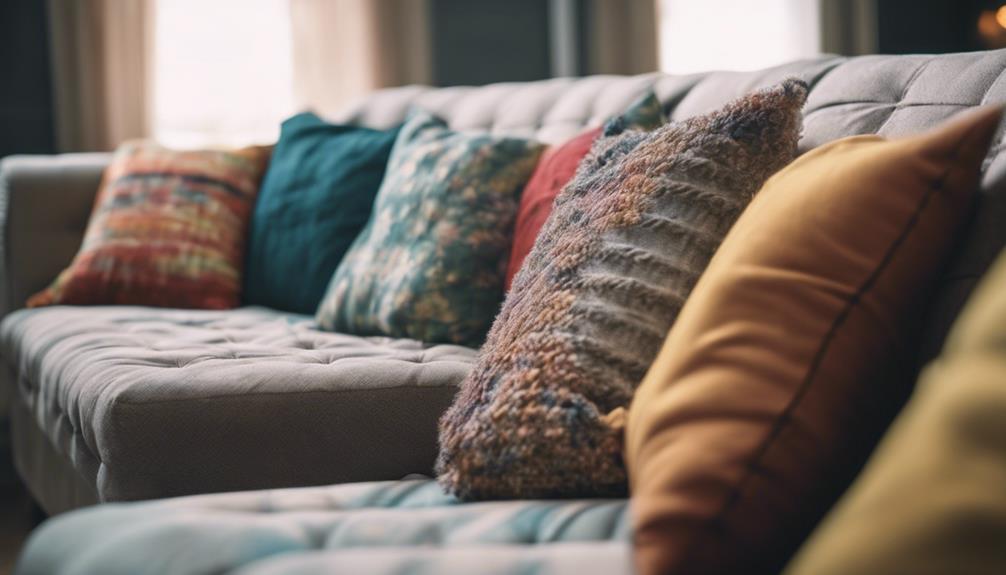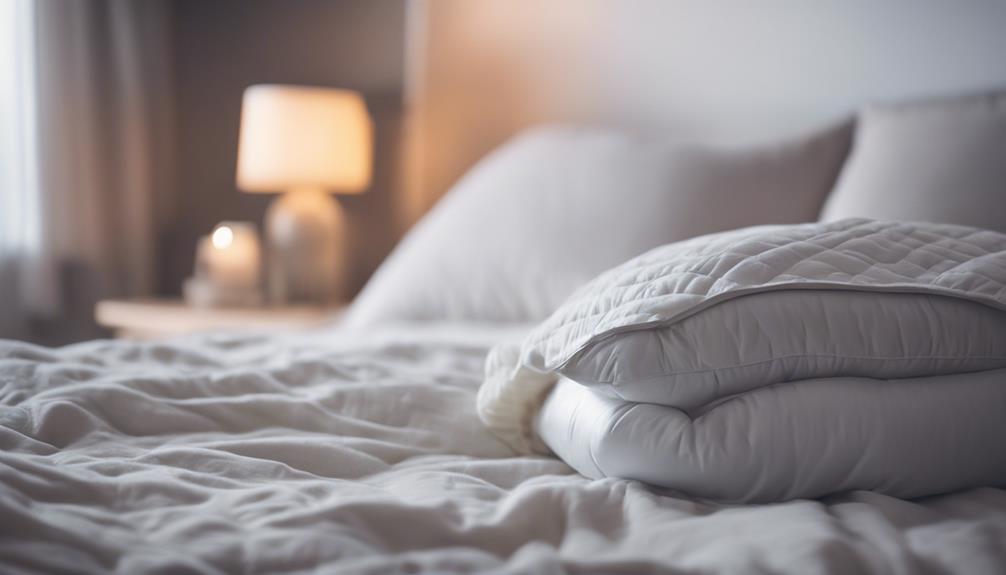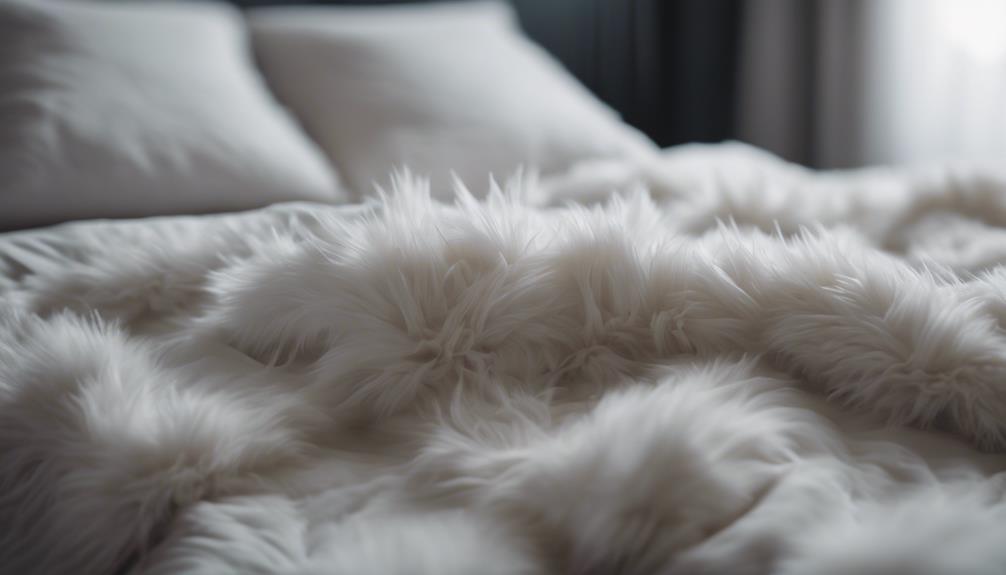When considering dry cleaning for your comforter, choose specialized services that offer professional care, affordable flat rates, and quick turnaround times. Expert dry cleaners utilize specialized chemistry and equipment to ensure top-notch maintenance. Look into establishments like The Cinnamon Club, Ma La, and Bbar in Westminster for professional cleaning in your area. These locations prioritize quality, pricing, and customer service. Ask about their specific cleaning techniques and eco-friendly options for a healthier sleeping environment. Rely on dry cleaners for expert care and enjoy a fresh and comfortable bedding experience. To learn more about the benefits and features of dry cleaning services, keep exploring.
Key Takeaways
- Professional dry cleaners nearby offer expert comforter cleaning services.
- Look for establishments with quality cleaning, convenient pickup, and delivery options.
- Consider eco-friendly cleaners for a healthy sleeping environment.
- Ensure quick service with next day turnaround for efficient cleaning.
- Trust specialists with specialized chemistry and equipment for best results.
Top-Rated Dry Cleaning Service for Comforters

When it comes to finding the top-rated dry cleaning service for comforters, we highly recommend Dry Clean Delivery Service for their exceptional quality and affordability. Getting your comforter dry cleaned can be a hassle, but with Dry Clean Delivery Service, the process is made easy and efficient. For a flat rate of $24.99, they offer to clean any size blanket or comforter, guaranteeing that your bedding is fresh and pristine. The next day turnaround time ensures that you won't be without your comforter for long.
Dry Clean Delivery Service uses specialized chemistry and equipment to provide professional garment care, giving you peace of mind that your comforter is in good hands. Customers rave about the quality and affordability of the service, making it a top choice for those looking to have their comforters cleaned. Additionally, the convenient pickup and delivery options make accessing their services a breeze. Trust Dry Clean Delivery Service for all your comforter dry cleaning needs.
Affordable Comforter Dry Cleaning Options

When seeking affordable comforter dry cleaning options, consider:
- Cost-effective cleaning methods
- Budget-friendly dry cleaners
- Economic dry cleaning solutions
These factors can help you save money while still ensuring your comforter receives proper care and maintenance. By choosing wisely, you can enjoy clean bedding without breaking the bank.
Cost-Effective Cleaning Methods
For those seeking budget-friendly ways to clean their comforters, affordable dry cleaning options can be a practical choice. Dry cleaning a comforter typically costs around $24.99, offering a cost-effective solution for maintaining cleanliness.
With next day turnaround for bedding cleaning services, you can enjoy quick and efficient service without guaranteeing on quality. Opting for in-house dry cleaning services provides convenience and expert care for your comforter. Professional garment care experts handle the cleaning process, ensuring that your comforter is returned in perfect condition.
The affordable flat rate pricing of $24.99 makes dry cleaning a comforter an accessible and economical option for many individuals looking to keep their bedding fresh and clean.
Budget-Friendly Dry Cleaners
Budget-friendly dry cleaners offer economical solutions for comforter dry cleaning, ensuring affordability without compromising quality. These dry cleaners provide comforter dry cleaning for as low as $24.99, with flat rates regardless of the comforter's size.
The next-day turnaround for all bedding items guarantees quick and efficient service, catering to customers' needs promptly. Expert garment care specialists handle the cleaning process, ensuring that comforters receive proper care and maintenance throughout.
Additionally, these affordable dry cleaners offer convenient pickup and delivery options, saving customers time and providing added convenience. With accessible pricing and quality service, budget-friendly dry cleaners are a practical choice for those seeking cost-effective comforter dry cleaning solutions.
Economic Dry Cleaning Solutions
With our focus on providing cost-effective solutions, we aim to explore various affordable options for dry cleaning comforters. Dry Clean Delivery Service offers a flat rate of $24.99 for any size of bedding, including comforters. Their next day turnaround guarantees quick service, making it a convenient choice for those in need of prompt cleaning. In-house dry cleaning services utilize specialized chemistry and equipment to effectively clean comforters while maintaining their quality. Positive customer reviews emphasize the affordability and quality provided by the $24.99 flat rate for blanket and comforter cleaning. Consider this economical option for keeping your bedding fresh and clean without breaking the bank.
| Pricing | Turnaround Time | Customer Reviews |
|---|---|---|
| $24.99 flat rate | Next day service | Positive feedback |
Professional Comforter Cleaning Near You

When seeking professional comforter cleaning services nearby, it's crucial to compare options based on quality and pricing. Additionally, consider looking for eco-friendly cleaning solutions to align with your values.
Nearby Dry Cleaning Options
For convenient and reliable professional comforter cleaning near you, consider the following nearby dry cleaning options:
- The Cinnamon Club – Known for excellent customer service, The Cinnamon Club offers dry cleaning services for bedding items, including comforters.
- Ma La – Providing affordable prices and outstanding customer service, Ma La is a great option for professional comforter cleaning.
- Bbar in Westminster – With a quick turnaround time and a focus on customer satisfaction, Bbar in Westminster is a dependable choice for your comforter cleaning needs.
These establishments not only prioritize customer service but also ensure your comforters are expertly cleaned and well taken care of.
Quality and Pricing Comparison
Exploring various dry cleaning options near you for professional comforter cleaning reveals a range of quality and pricing factors that are crucial to take into account. When comparing services, it's vital to mull over the cleaning methods, pricing, and additional perks offered by each establishment. Here is a comparison table to help you make an informed decision:
| Dry Cleaner | Quality of Service | Price Range |
|---|---|---|
| Clean & Fresh | High | £30-£40 |
| Spotless Cleaners | Medium | £20-£30 |
| Fresh Air Dry | High | £40-£50 |
Ensure you inquire about specific cleaning processes, such as air dry methods, to maintain your comforter's quality and longevity. Remember, investing in professional cleaning can help extend the lifespan of your comforter while keeping it fresh and hygienic.
Eco-Friendly Cleaning Solutions
To guarantee a healthy sleeping environment for your comforter, consider opting for eco-friendly cleaning solutions provided by professional services near you. Here are three reasons why clean bedding is essential:
- Healthier Sleep: Eco-friendly cleaning solutions make sure that your comforter is free from harmful chemicals, promoting a healthier sleeping environment.
- Specialized Care: Professional comforter cleaning services near you offer specialized care for various materials like down, cotton, and silk, ensuring excellent cleaning results.
- Delicate Fabric Expertise: Expertise in handling delicate fabrics like satin or linen guarantees that your comforter receives the proper care it needs for a thorough cleaning process.
Fast and Reliable Comforter Dry Cleaners

When it comes to cleaning your comforter quickly and dependably, dry cleaners are the go-to choice. Dry cleaners specialize in handling all sizes of blankets and comforters efficiently, offering a flat rate of $24.99 for their services.
Customers can expect next day turnaround for all bedding items, ensuring a quick and convenient experience. Professional garment care experts at dry cleaners utilize specialized chemistry and equipment to achieve best cleaning results, maintaining the quality and integrity of your comforter.
Additionally, dry cleaners provide additional convenience through pickup and delivery options, making the process even more seamless for customers. By entrusting your comforter to the expertise of dry cleaners, you can rest assured that it will be cleaned thoroughly and promptly, allowing you to enjoy a fresh and cozy bedding experience in no time.
Expert Care for Your Comforter

How can professional dry cleaners provide expert care for your comforter?
When it comes to caring for your bedding, entrusting it to the expertise of dry cleaning professionals guarantees it receives the attention it deserves. Here are three ways these experts can make sure your comforter stays in top condition:
- Specialized Chemistry: Professional dry cleaners utilize advanced cleaning solutions specifically designed for different types of fabrics and stains, guaranteeing your comforter is treated with the utmost care and consideration.
- State-of-the-Art Equipment: From washing machines to drying facilities, dry cleaners invest in high-quality equipment that can handle the delicate fabrics and intricate designs of comforters, ensuring they're cleaned effectively without damage.
- Attention to Detail: Professional dry cleaners are trained to inspect each comforter thoroughly, identifying any specific stains or areas that require special treatment, ensuring your bedding receives personalized care for a fresh and rejuvenated look.
Trusting your comforter to expert care assures it will be returned to you in pristine condition, ready to provide you with comfort and warmth.
Convenient Comforter Dry Cleaning Services

Seeking convenience and quality care for your comforter? Explore Dry Clean Delivery Service. With their large capacity and convenient pick-up and delivery options, getting your comforter cleaned has never been easier. Professional garment care experts guarantee extraordinary care for your comforter, providing a flat rate of $24.99 for cleaning any size blanket or comforter.
Not only does Dry Clean Delivery Service offer convenience, but they also promise a next day turnaround for all bedding items, including blankets and comforters. This means you can have your comforter cleaned quickly and efficiently without any hassle. Positive customer reviews rave about the great customer service and the high quality of the service provided.
With Dry Clean Delivery Service, you can trust that your comforter will be in good hands. Experience the convenience and exceptional care for your comforter today.
Frequently Asked Questions
Can You Bring a Comforter to the Dry Cleaners?
Yes, comforters can be brought to the dry cleaners for professional cleaning. They've the expertise to handle delicate fabrics and large items like comforters.
Dry cleaning services offer specialized cleaning processes for bedding items, ensuring thorough cleaning and maintenance. This expert care helps extend the lifespan of your comforter.
It's a convenient option for keeping your bedding fresh and well-maintained.
Is It Worth Dry Cleaning a Comforter?
It's definitely worth dry cleaning a comforter to keep it fresh and prolong its lifespan. Professional services use specialized techniques for thorough cleaning, removing stains and odors regular washing may miss.
Delicate fabrics and intricate designs benefit from dry cleaning to maintain quality. Investing in this service guarantees a clean, well-preserved bedding item.
How Much Does It Cost to Clean a Down Comforter?
Cleaning a down comforter typically costs between $20 to $50, varying based on size and location. Professional dry cleaners may charge more for delicate down comforters due to their specialized cleaning needs.
DIY options like at-home dry cleaning kits offer a more budget-friendly alternative. Dry cleaning guarantees proper care to maintain the comforter's quality and longevity, preserving its insulation and fluffiness for a cozy sleep experience.
Where Can I Dry My Comforter?
When considering where to dry my comforter, we've plenty of options. Dry cleaning establishments are the go-to places for such tasks. These professionals offer specialized services tailored to comforters of all sizes.
Opting for dry cleaning guarantees the proper care and maintenance of our beloved comforters. Some cleaners even provide pick-up and delivery services for added convenience. The outcome of professional dry cleaning is a well-maintained and fresh comforter, ready to be enjoyed.
Conclusion
As you seek out the perfect place to dry clean your comforter, remember that expert care and convenience are key.
Look for a top-rated dry cleaning service that offers fast and reliable cleaning options at an affordable price.
Trust in the professionals near you to handle your comforter with care, ensuring it returns to you fresh and clean.
Choose a service that symbolizes quality and reliability, giving you peace of mind and a comfortable night's sleep.









